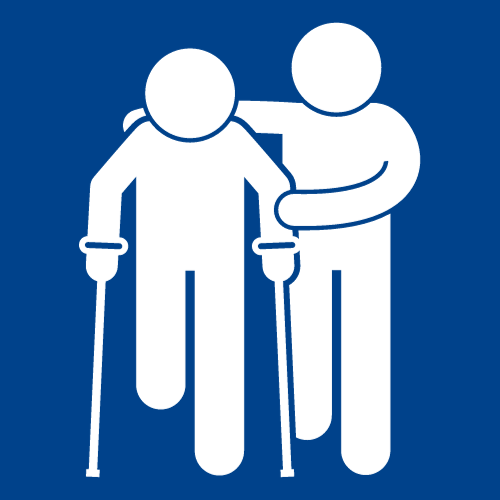Deciding to move an aging parent into a new home can be an emotionally and logistically challenging process. As loved ones get older and require more assistance, relocating them to a setting that better suits their physical abilities and health needs is often necessary.
As a physical therapist who has helped countless elderly patients transition living spaces safely and smoothly, I’ve seen the common mistakes that lead to needless stress. I decided to create this comprehensive checklist for moving elderly parents, based on both professional expertise and personal experience.
My own mother needed to move in with me at age 82. Helping her sell the family home we grew up in and move into my home was incredibly difficult. By carefully following a checklist, we could have easily avoided the surprises that occurred. I don’t want other families to encounter the same issues, so this guide covers all aspects of moving elderly loved ones in purposeful detail.
If you follow the tips and suggestions outlined in this checklist, you can avoid major pitfalls, reduce anxiety, and ease the transition for aging parents to their new home, whatever the reason and wherever the location.
Have Crucial Conversations
Before even looking for a new home for elderly parents, there are a few conversations that families should plan in advance:
Discuss Needs and Wants: Have a patient, open talk with aging parents about what type of accommodations, features, care, and setting they envision for this next stage of life. Understand their needs for accessibility, community, activities, medical care access, and other unique desires before getting far in the moving planning process.
Address Safety Concerns: Identify any risks in an aging parent’s current home that prompt a move, like stairs that make falling more likely or being socially isolated. Discuss how prospective living options will reduce these concerns. This can help older adults understand – and possibly embrace – the move.
Set Realistic Expectations: A move will require adjustments for aging parents. Change can be incredibly difficult, so help loved ones set realistic expectations about what may stay the same and what will be different after relocating. For example, they may need to leave behind a beloved garden or big kitchen but will gain more accessibility, activities, and new friends.
Determine Affordability: Moving requires financial planning, especially when living on a fixed income. Have transparent conversations early about what aging parents can reasonably afford for housing and care costs. This prevents finding a home they love but ultimately can’t manage payments for over the long-term.
Involve the Right Team of Helpers
Moving anyone takes effort. But for aging parents, having an experienced, compassionate support team is crucial for success. Identify who needs to be involved early.
Trusted Family Members: Determine which close loved ones have availability to physically help with tasks involved in moving. Assign roles clearly from the start.
Geriatric Care Manager: Consider hiring a professional Geriatric Care Manager. They specialize in elder care and can advise on housing choices while seamlessly coordinating community resources.
Licensed Contractor: To modify a new home for accessibility, safety, and ease for an aging adult, an experienced contractor should perform renovations or the installation of equipment like grab bars or railings.
Realtor Specializing in Relocation: A real estate agent well-versed in the unique needs of older buyers can simplify the housing search tremendously. Ensure whomever you choose thoroughly understands specific accessibility requirements and neighborhood features that facilitate aging in place.

Create a Matrix of Prospective Living Options
Numerous housing arrangements exist for older adults, so narrowing down choices requires a systematic approach. This checklist will help families thoughtfully reflect on their priorities. Be sure to involve aging parents directly in analyzing options to find suitable living quarters that really match their health status, care needs, financial realities, and personal preferences.
Community Characteristics
Does the area offer accessibility to desired amenities and resources? Consider proximity to healthcare services, public transportation, places of worship, shops, and recreational facilities. Also examine community features that determine livability such as cost of living, neighborhood safety, or volunteering opportunities.
Physical Home Features & Layout
Do available living spaces have structural elements required for mobility, safety, and ease? Assess if potential homes meet needs for aspects like a bathroom equipped for disabled access, no stairs, wide doorways and hallways, or even technology accommodations.
In-Home Care & Assistance
Determine what level of in-home health, personal, or custodial care aging parents currently require or likely will need in the near future. Then identify if prospective housing arrangements can provide the required caregiver access and personnel assistance, either via community services or directly on-site.
Level of Independence Offered
Consider aging parents current and upcoming physical, medical, and cognitive health as objectively as possible. Choose housing scenarios that will afford autonomy while offering appropriate levels of daily assistance and oversight to match abilities and emerging limitations. Remember that needs will progress over time. Select options that can responsibly and flexibly provide the right support now but scale up care as aging parents decline.
Affordability of Rent/Purchase
After listing necessities then housing choices, scrutinize if potential new homes line up realistically with aging parents’ financial capabilities and assets. Factor in not just rent or mortgage but also utilities, community fees, medical care access fees, home modifications, maintenance and significant healthcare costs over the long run. Developing an accurate long-range personal finance assessment prevents future housing crisis due to expenses exceeding income and savings.
Future Planning in Mind
While a move represents starting a new chapter, families must still plan for the journey’s end. Consider how prospective living options address aging parents’ final needs for issues like end-of-life care directives, estate planning, funeral arrangements, heritage intentions, or asset distribution desires.
By methodically covering each of these key relocation considerations for elderly loved ones in the matrix, families can thoughtfully prioritize and evaluate many complex factors to narrow suitable housing possibilities. This prevents wasting time touring or pursuing options that ultimately won’t fulfill fundamental needs.
Top-Rated Housing for Elderly Parents
After carefully examining the matrix to identify non-negotiable requirements then desirable features, what specific living arrangements make the short list? Here are my top recommended and time-tested options I suggest families explore when moving aging parents:
Active Senior Living Apartment Communities
These private apartments within collectively managed complexes cater uniquely to active aging adults, usually starting at age 55. Services, amenities, activities, and a sense of community optimize independent but engaged retirement living. Depending on personal finances and health status requiring extra assistance, many communities have levels from independent cottage homes up to assisted living accommodations more suitable for declining mobility or early dementia.
Multigenerational Homes
For some families, the best solution involves purposefully relocating extended family into one new multigenerational home large enough to comfortably house elderly parents (including potential live-in caregivers), their adult children’s households, and grandchildren. This arrangement works with certain floorplans and can be ideal for shared caregiving duties.
Accessory Dwelling Units
Sometimes called granny flats or in-law suites, these small accessory homes are self-contained living spaces on the same grounds as a larger primary home. They allow aging adults to reside on family property with relatives nearby, but with privacy and autonomy.
Local zoning ordinances permit these units, which can be stand-alone guesthouses or basement/garage apartments. If aging parents require skilled medical care, families should explore whether government financial assistance programs fund placement in quality nursing homes or care centers. These facilities provide room, meals, medication assistance, medical care, and activities for those needing full-time attentive help.
Use This Handy Moving Checklist
Determining the right home is a huge piece of smoothly relocating elderly loved ones. But navigating endless logistical details during the actual move takes meticulous planning too! From coordinating family schedules to arranging furniture movers suited for aging clients, this comprehensive checklist covers it all. So print this list out and tick tasks off as you go:
- Research and schedule senior-friendly professional movers
- Arrange an estate sale for belongings not moving from original home
- Request time off work for family members as “All Hands On Deck!” moving help
- Develop a room-by-room floorplan layout for new home
- Measure furniture and doorway clearance to avoid moving pieces that won’t fit
- Order any medical equipment (like hospital beds) and accessibility tools for safety in advance
- Ensure all prescription medications packed together in one secure bag traveled with you personally
- Back up computer files and photograph album originals just in case
- Pack a few older cherished items and small comfort objects to make first nights less unfamiliar
- Label all boxes or mover inventory by exact room boxes go into to ease unpacking
- Pack small overnight bags with immediate use toiletries, clothes, medicines, laptops/chargers, and snacks for moving day
- Confirm utility connection dates for new home early to prevent paying double bills that month
- Print hard copies of all driving directions plus new home costs and important contacts
- Plan out where furniture will be placed in each room beforehand for professional movers
- Recruit friends or local youth group as extra muscle to assist professional movers as needed
- Assign one family member as central “Command Headquarters.” This person oversees master checklist, directs traffic, tracks people’s locations, and solves problems. They should NOT get pulled into helping carry items themselves.
- Check off movers’ truck inventory BEFORE anything comes off the truck into new home. Confirm it’s labeled by exact new home room for easy placement.
- Set up a color-coded sticky note system: Pink sticky notes indicate “content caution/extra fragile” boxes. Yellow stickies signal “priority unpack” boxes needing immediate access like medications or electronics.
- Keep your own car packed and ready to drive aging parents themselves to new home at any point if they feel too exhausted. Make them only point person so they relax comfortably all day.
- Take photos of special furniture in original home before movers disassemble particular vintage pieces to help ensure proper re-assembly.
- Pack a Moving Day Survival Kit for the family: aspirin, bandages, water bottles, granola bars, stain remover wipes. Moving mishaps happen!
- Make a hands-free shoulder bag for parents with instant essentials: small throw blanket, insulin/inhalers if needed, hand wipes, mint gum to ease nerves
Moving Day Game Plan
Orchestrating the mass choreography of a physically moving day takes next-level logistical skills. As the coordinator directing everything, below are my top tips for smooth execution:
- assign one family member as the central “Command Headquarters.” This person oversees a master checklist, directs traffic, tracks people’s locations, and solves problems. They should not get pulled into helping carry items themselves.
- Check off movers’ truck inventory BEFORE anything comes off the truck into new home. Confirm it’s labeled by exact new home room for easy placement.
- Set up a color-coded sticky note system: Pink sticky notes indicate “content caution/extra fragile” boxes. Yellow stickies signal “priority unpack” boxes needing immediate access like medications or electronics.
- Keep your own car packed and ready to drive aging parents themselves to new home at any point if they feel too exhausted. Make them only point person so they relax comfortably all day.
- Take photos of special furniture in original home before movers disassemble particular vintage pieces to help ensure proper re-assembly.
- Pack a Moving Day Survival Kit for the family: aspirin, bandages, water bottles, granola bars, stain remover wipes. Moving mishaps happen!
- [ ]Make a hands-free shoulder bag for parents with instant essentials: small throw blanket, insulin/inhalers if needed, hand wipes, mint gum to ease nerves
Settling Into New Living Quarters
You transported all your possessions and people. Now breathe deeply as elderly parents adjust to new living quarters. Help make the transition positive and upbeat with these settling-in pointers:
- Treat the whole family to a cheer-up dinner out so no one tackles kitchen cleanup the exhausting first night.
- Keep a running “Oops! List” of any unpacked items you discover are missing or broken to reconcile with movers later.
- program or label television remotes and electronic devices with masking tape and markers for simplified use.
- Create bright, personalized welcome signs for important rooms like bathrooms or bedrooms. Photographs of family members remind aging parents that loved ones remain nearby.
- Set up non-breakable items first in the living area: lamps, chairs, and photos. This makes temporary, sparse conditions less depressing.
- Stock the freezer with pre-made meals friends cooked earlier, so no cooking is required during hectic unpacking.
- Help aging parents place treasured nostalgic keepsakes and heirlooms where they are visible to give comfort.
- Establish a first aid area, mark emergency exits clearly, and store fire extinguishers easily before anything else. Safety first!
Take the time upfront to compassionately include aging parents’ wishes when determining living arrangements. Then methodically develop an ironclad organizational plan using this thorough checklist for move coordination, preparation, packing, transport, and resettling. While relocations present challenges, these tips help families manage logistics smoothly so that elderly loved ones simply focus on embracing this new chapter.






